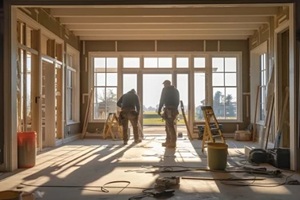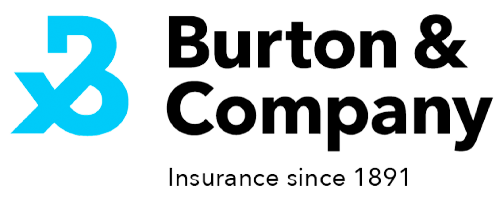
The process of filing an insurance claim can be stressful for home builders, particularly when timelines and budgets are already tight. Any delay can create setbacks, increase costs, and complicate relationships with clients and subcontractors. Knowing how to handle claims from the beginning can alleviate some of the stress and help expedite the process.
We’ve outlined the most important 8 steps from the very beginning, and common pitfalls to avoid to help you move swiftly and thoroughly through a claim.
1. Start With the Right Coverage
Before any work begins, it’s essential to have the correct policies in place. For home builders, that typically includes:
- Builder’s risk insurance for damage to the property under construction
- General liability insurance for third-party injuries and property damage
- Commercial auto insurance is required if vehicles are used during the project
- Workers’ compensation for job site injuries to employees
These policies cover the most common risks on a construction site. Reviewing your policy details before you ever need to file a claim can help avoid unnecessary confusion or delays.
2. Notify Your Insurer Quickly
Once an incident occurs, the first step is to secure the site and confirm that everyone is safe. After that, notify your insurance carrier as soon as possible as most policies include time limits for reporting claims. The sooner you reach out, the quicker an adjuster can begin reviewing the situation and moving the process forward.
Most companies let you file a claim by phone. Keep your policy number and the main details of the incident on hand when you call.
3. Document Everything
Strong documentation can help your claim get approved promptly. Your record-keeping should include:
- Clear photos and videos of all damage before cleanup or repair
- Notes about the timeline of events
- Witness statements from employees or subcontractors
- Police or fire department reports, if applicable
Visual evidence and organized notes help your adjuster understand what happened and can expedite the approval process. Be sure to keep everything in a dedicated folder or digital file for easy access.
4. Track All Temporary Repairs and Expenses
If you need to make emergency repairs to prevent further damage, be sure to document those actions and save the receipts. Insurers typically reimburse for reasonable emergency repairs that mitigate further loss, provided they are supported by proof.
Include invoices for materials, service calls, and any related labor. If equipment or tools are damaged and need replacement, take photos of them first and keep a record of their original cost.
5. Communicate Clearly with the Adjuster

When your insurance adjuster visits the site, provide accurate information about what occurred. Do not fall back on speculation or assumptions; instead, provide clear facts and let your documentation speak for itself. If you don’t know the cause of a particular issue, say so.
Keep copies of all documents you provide to your adjuster and take detailed notes during any in-person or phone meetings. If you’re unclear about a request, ask for clarification. Good communication helps keep the process moving.
6. Follow Up Proactively
If days or weeks pass without an update, check in on the status of your documents. Following up with your claims representative with a quick call or email makes sure that your case stays top of mind and allows you to clarify any issues before they become obstacles.
7. Don’t Discard Evidence Too Early
Keep any damaged materials and don’t initiate major repairs until your insurer has completed its inspection. To determine coverage and reimbursement, adjusters need to verify the loss. If something must be removed for safety reasons, take thorough photographs beforehand.
This step is particularly important for losses involving water damage, fire, or theft, as physical evidence helps confirm the scale and source of the claim.
8. Understand the Claims Timeline
Every insurance claim is different, but most follow a basic timeline. Once a claim is filed, insurers are typically required to investigate, make a decision, and pay out covered losses within a “reasonable” timeframe, often within 30 to 60 days, depending on your state.
Knowing your state’s deadlines and your policy terms will help you hold insurers accountable and make smart decisions if additional steps are needed.
Common Claim Pitfalls to Avoid
To keep the claims process running, avoid these common mistakes:
- Waiting too long to report the incident
- Starting non-emergency repairs before inspection
- Submitting incomplete documentation
- Failing to follow up with the adjuster
- Providing inconsistent details
This will increase the odds of receiving a complete and timely payout, which can significantly impact your project timelines and financial stability.
Seek Out Professional Guidance

A professional can help you sort out claims involving multiple contractors, complex damage, or high-value property. An experienced insurance advisor can help interpret your policy, clarify confusing language, and advocate on your behalf if problems arise. They can also assist in preparing and submitting the claim, as well as negotiating with the insurer to maximize your payout.
Make Your Next Insurance Claim Smoother with Burton & Company
When you’re juggling job sites, schedules, and subcontractors, the last thing you need is a stalled insurance claim. Burton & Company partners with home builders across Virginia to keep claims moving, from accurate documentation and thorough coverage reviews to clear, prompt communication every step of the way. Let us handle the paperwork, so you can stay focused on building.
Call (888) 652-1325 or contact us online to speak with a team that truly knows construction insurance inside and out.

